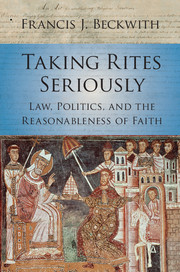1 - Introduction: Faith Seeking Understanding
Published online by Cambridge University Press: 05 November 2015
Summary
I do not endeavor, O Lord, to penetrate your sublimity, for in no wise do I compare my understanding with that; but I long to understand in some degree your truth, which my heart believes and loves. For I do not seek to understand that I may believe, but I believe in order to understand. For this also I believe, – that unless I believed, I should not understand
St. Anselm of Canterbury (1033–1109)I want atheism to be true and am made uneasy by the fact that some of the most intelligent and well-informed people I know are religious believers. It isn't just that I don't believe in God and, naturally, hope that I'm right in my belief. It's that I hope there is no God! I don't want there to be a God; I don't want the universe to be like that.
Thomas Nagel (1937–)In February 2004 I was invited to give an address at the Texas Tech University School of Law. The title of my talk, “Law, Darwinism, and Public Education,” was based largely on my book of the same name. News of the event had apparently reached the university's biology department, and several of its members had shown up, accompanied by a local attorney from the American Civil Liberties Union (ACLU). My lecture focused on whether the controversial theory of “Intelligent Design” (ID), a view embraced almost exclusively by religious scholars, could pass constitutional muster if a school board either required or permitted it to be taught in its science classes. Although I had nagging doubts about ID as a theory, and I did not think that as a matter of policy it was a good idea for the government to require the teaching of it, the focus of my talk, as with the book, was to answer a question of constitutional jurisprudence. On that question I concluded that I could not find a persuasive reason to believe that the Constitution forbids the teaching of ID in public schools. (As un-luck would have it, the following year [2005] a Federal District Court in Pennsylvania thought otherwise, a point that I address in Chapter 6 of this present volume).
- Type
- Chapter
- Information
- Taking Rites SeriouslyLaw, Politics, and the Reasonableness of Faith, pp. 1 - 10Publisher: Cambridge University PressPrint publication year: 2015



